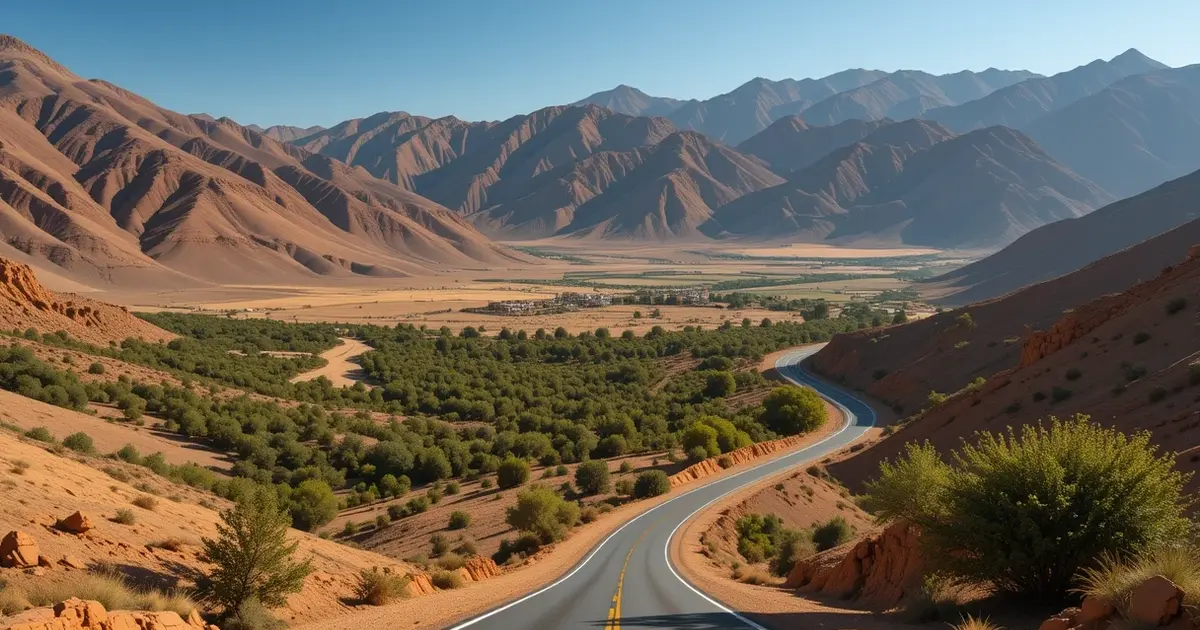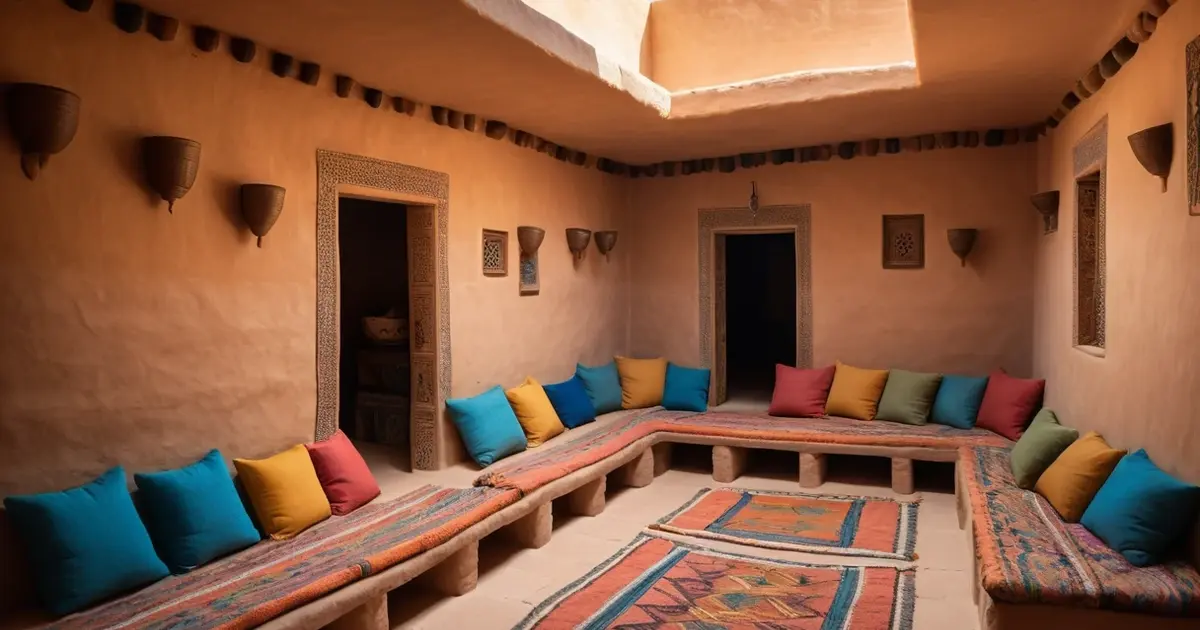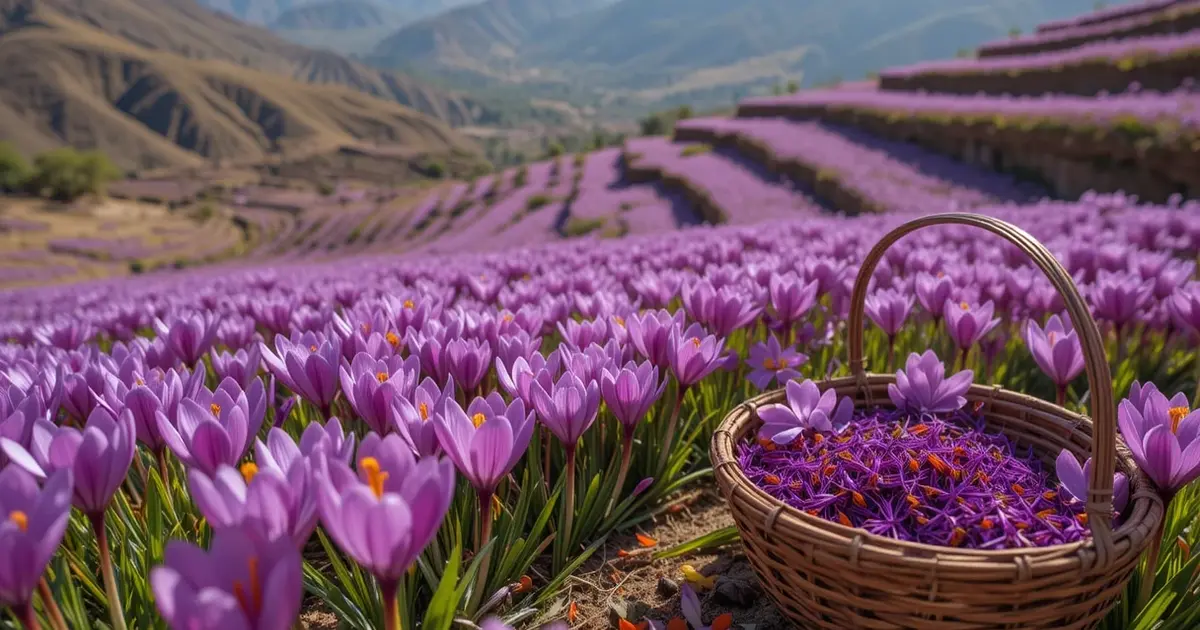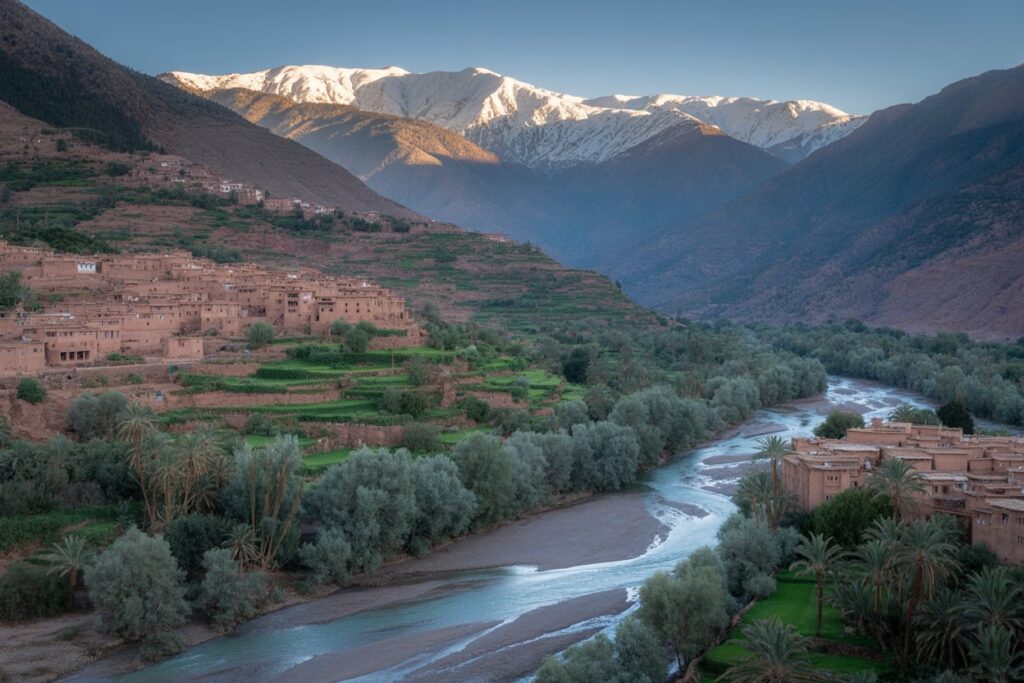Just 30 kilometers from Marrakech’s bustling medina lies a world apart—the Ourika Valley, where time flows with the rhythm of the river and authentic Berber culture thrives in the shadow of the Atlas Mountains. Unlike Morocco’s well-trodden tourist paths, this verdant sanctuary offers a glimpse into a way of life that has remained largely unchanged for centuries.
The Gateway: Where Desert Meets Mountain

The transformation begins gradually. Leaving Marrakech’s ochre walls behind, the landscape shifts from arid plains to lush greenery. The temperature drops several degrees as the road winds upward into the foothills of the Atlas Mountains. This natural air conditioning has made Ourika a retreat for locals long before tourists discovered its charms.
My driver, Hassan, points to the snowcapped peaks in the distance. “Those mountains feed our valley,” he explains. “The water brings life to everything you see.” Indeed, the contrast between the dusty approaches to Marrakech and this verdant valley couldn’t be more striking.
We pass through small villages where weekly souks spill across the roadway—a colorful chaos of produce, textiles, and household goods. Unlike the souvenir-laden markets of Marrakech, these are working markets for local people. Farmers haggle over livestock prices, women inspect grain quality, and children weave through the crowd with trays of mint tea.
The River’s Song: Life Along the Ourika

The Ourika River is the valley’s lifeblood. In spring, snowmelt from the Atlas Mountains transforms it into a powerful force that has carved the landscape over millennia. By summer, it settles into a gentler flow, creating perfect swimming holes and peaceful spots for riverside picnics.
I follow a narrow path alongside the water, where local families have set up small restaurants on wooden platforms extending over the river. These simple structures, built with ingenuity and respect for the natural flow, offer an experience no luxury resort could match—dining with your feet dangling in cool mountain water while tajines simmer over charcoal fires.
At one such platform, I meet Fatima, who has been cooking for visitors for over twenty years. “Before the road was improved, only the most adventurous travelers came here,” she tells me, expertly flipping bread on a dome-shaped clay oven. “Now we see more visitors, but still, they don’t stay long enough to know us.”
Her tajine—a fragrant stew of lamb, prunes, and almonds—cooks slowly under a conical earthenware lid. “Good food cannot be rushed,” she says, noticing my interest. “Like understanding a place—it takes time.”
The Ancient Ways: Berber Villages of Stone and Earth

The true treasures of Ourika lie in its hillside villages, where Berber communities maintain traditions dating back centuries. These settlements, built from local stone and earth, blend so perfectly with the landscape that they seem to have grown organically from the mountainsides.
In the village of Tafza, I visit a traditional Berber house that has been preserved as a small museum. Mohammed, my local guide, explains how the architecture evolved perfectly for this environment—thick walls for insulation, strategic ventilation for summer cooling, and flat roofs for drying crops.
“Our ancestors built with what the earth provided,” he says, pointing to the earthen walls mixed with straw for strength. “Nothing wasted, nothing imported.”
The home’s interior reveals ingenious space utilization—sleeping platforms that double as seating areas, storage nooks built into walls, and a central courtyard that brings light to all rooms while maintaining privacy from the outside world.
The Saffron Gardens: Gold from the Earth

Higher in the valley, terraced fields reveal one of the region’s most precious treasures—saffron. These small purple flowers, whose cultivation was brought to Morocco by Andalusian refugees centuries ago, produce the world’s most expensive spice.
I arrive at harvest time, when the entire community participates in gathering the delicate blooms before sunrise. Families work together in the cool morning hours, carefully picking flowers and placing them in woven baskets.
Later, in a stone courtyard, women sit in circles, extracting the three red stigmas from each flower with practiced precision. These tiny threads will be dried to become saffron. It takes approximately 150 flowers to produce just one gram.
“We could use machines, but the quality would suffer,” explains Aisha, whose fingers move with remarkable speed. “Some things should remain as they have always been.”
The Healing Waters: Seven Sisters Waterfall

A steep path leads to one of Ourika’s natural wonders—the Setti Fatma waterfalls, known locally as the Seven Sisters. Unlike Morocco’s desert landscapes, here water cascades down multiple levels of smooth rock, creating pools and mist that nurtures ferns and wildflowers.
Local legend holds that each of the seven falls has healing properties for different ailments. Whether scientifically valid or not, there is undeniable therapy in the negative ions released by falling water and the symphony of sounds created by the cascades.
I climb to the third waterfall with Youssef, a young local guide who has navigated these rocks since childhood. “My grandfather brought me here when I was five,” he says, offering a steadying hand as we cross slippery stones. “He taught me that the mountain gives us everything—water, plants for medicine, stones for building. Our job is to respect it.”
The Light’s Farewell: Sunset in the Valley
As afternoon wanes, I find a quiet spot overlooking the valley. The setting sun transforms the landscape, painting the red earth golden and casting long shadows across the terraced fields. Farmers lead donkeys laden with the day’s harvest along narrow paths. Smoke rises from cooking fires as villages prepare evening meals.
This view has remained essentially unchanged for centuries—a living tableau of sustainable existence in harmony with the natural world. In an age of rapid development and environmental crisis, Ourika Valley stands as both memory and possibility—a reminder of how humans can live as part of nature rather than apart from it.
As darkness falls, the valley’s authentic character reveals itself in the absence of excessive artificial light. Stars emerge with astonishing clarity, and the sounds of the river provide a gentle soundtrack to the night.
The Ourika Valley offers no luxury resorts or famous monuments, yet it provides something increasingly rare—an authentic place where traditional life continues with dignity, where nature’s rhythms still govern daily existence, and where visitors willing to slow down can glimpse a more sustainable way of being in the world.
Address Book:
- Dar Amalou: Family-run guesthouse in Tnine Ourika with panoramic mountain views
- Café des Cascades: Riverside café near Setti Fatma with traditional Berber cuisine

